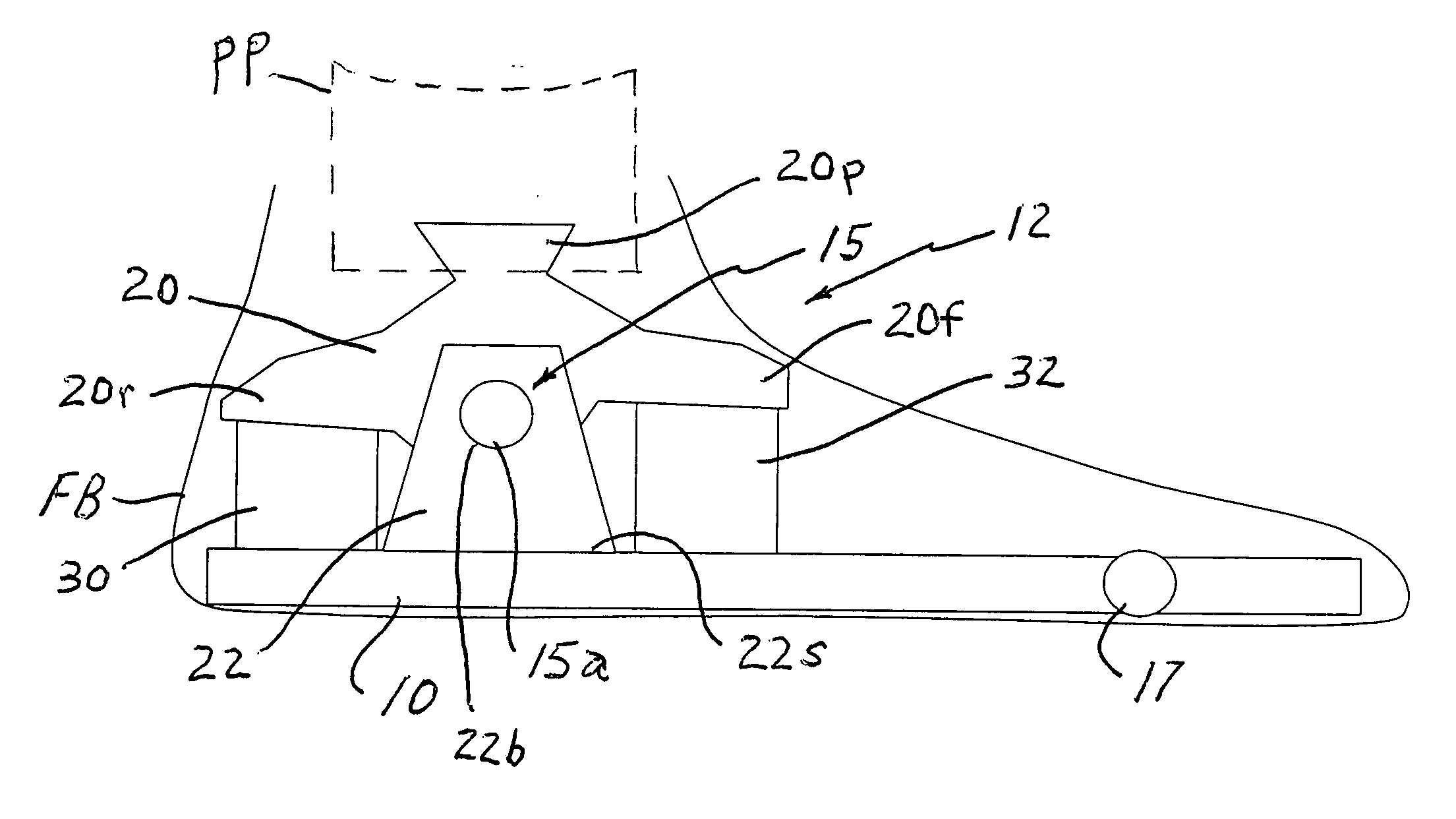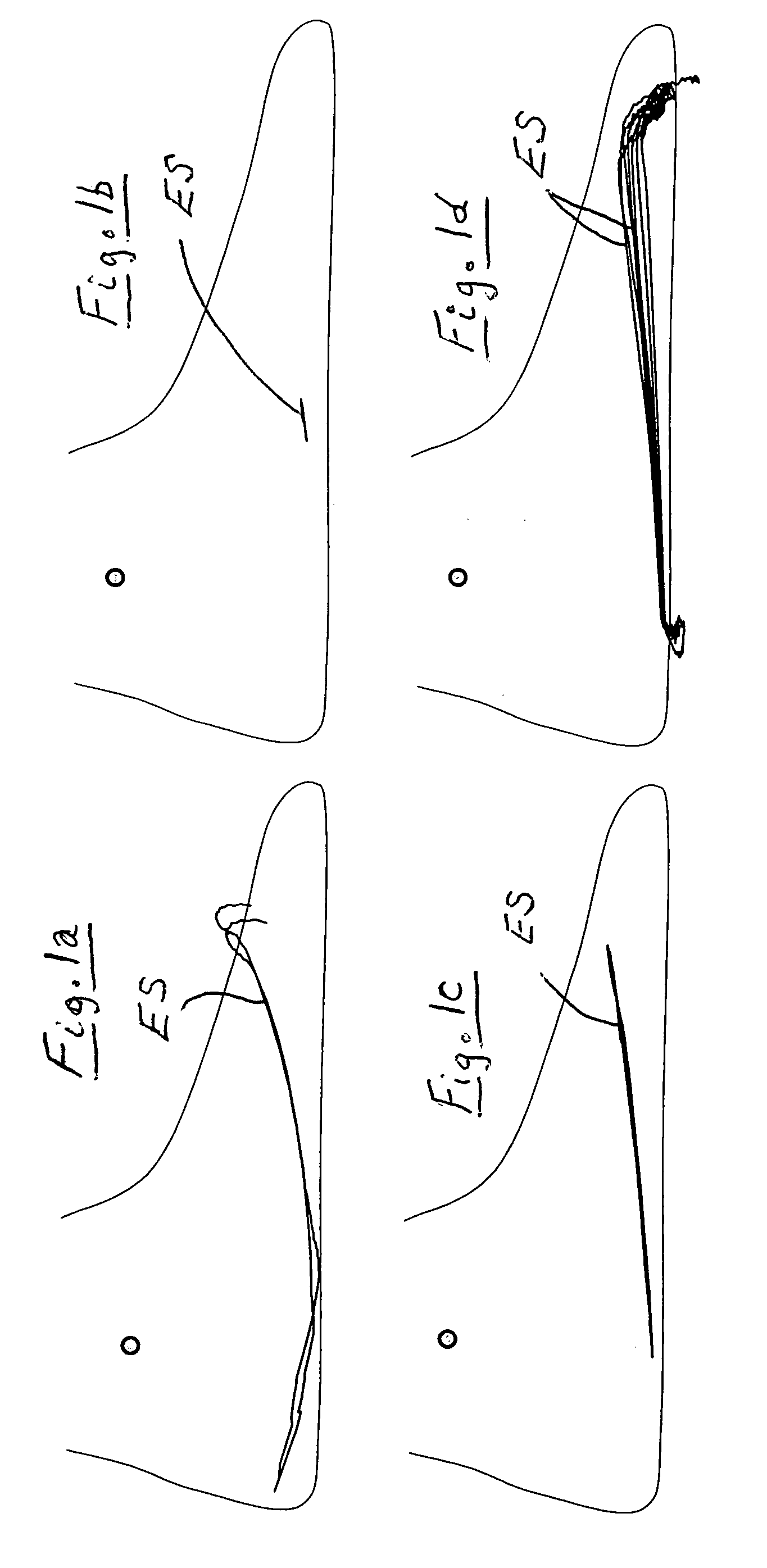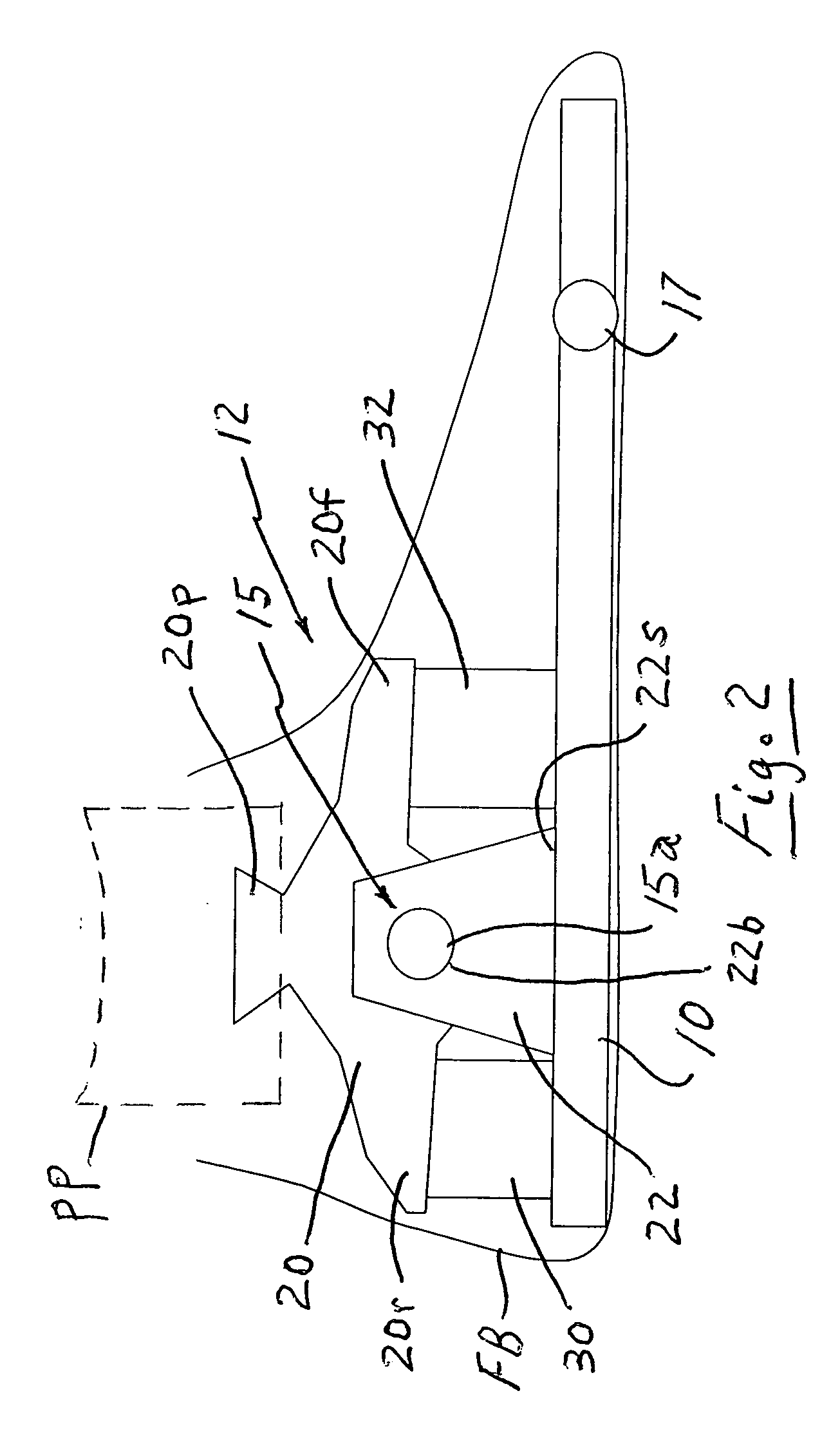Bi-modal ankle-foot device
a bi-modal and ankle-foot technology, applied in the field of bi-modal ankle-foot devices, can solve the problems of low estimate, unstable shoe, and unstable shoe for users of bi-modal prosthesis
- Summary
- Abstract
- Description
- Claims
- Application Information
AI Technical Summary
Benefits of technology
Problems solved by technology
Method used
Image
Examples
Embodiment Construction
[0029]The present invention provides a bi-modal ankle-foot prosthetic or orthotic device that provides a curved effective shape, such as for example a generally circular rocker (rollover) shape, during walking and a flattened effective shape (relative to the curved shape) during standing. In particular, applicants have examined the effective rocker (roll-over) shape of the able-bodied ankle-foot system during standing and low amplitude swaying and have found that this effective shape is very flat for standing including swaying. Thus, the ankle-foot device pursuant to the invention mimics its physiologic counterpart by conforming to a curved effective shape during walking and a flattened effective shape during standing and offers two modes of function at the ankle joint with one mode for standing and one mode for walking.
[0030]The present invention embodies observations of a 25 year old able-bodied female subject and others who participated in a pilot study to indicate the effective ...
PUM
 Login to View More
Login to View More Abstract
Description
Claims
Application Information
 Login to View More
Login to View More - R&D
- Intellectual Property
- Life Sciences
- Materials
- Tech Scout
- Unparalleled Data Quality
- Higher Quality Content
- 60% Fewer Hallucinations
Browse by: Latest US Patents, China's latest patents, Technical Efficacy Thesaurus, Application Domain, Technology Topic, Popular Technical Reports.
© 2025 PatSnap. All rights reserved.Legal|Privacy policy|Modern Slavery Act Transparency Statement|Sitemap|About US| Contact US: help@patsnap.com



